As most of us know, the job search and application process is not always fun nor easy. However, there are ways to make the process more efficient to save both the applicant’s time as well as the employer’s. One way to do this is to create an application that is split into several steps, and the process ends if the candidate is disqualified following any of those steps. This way, the candidate’s time isn’t wasted going through unnecessary steps if it is already determined that they are not qualified.
Another way is making the applicant assessment as accurate and specific to the job as possible so that, ultimately, the best-fitting applicant can be hired and have a better chance at succeeding in their new role.
As an employer, you may be wondering what our application process is like from the candidate’s perspective. In this article we will walk you through what it’s like to apply for a job through Stang Decision Systems’ hiring process.
Finding the Job
When a new job is created in the SDS HireScore Talent Portal, that job is posted to your company’s own custom SDS job board, to JobOdds.com (our proprietary job board), and over 100 of the most popular job boards. The applicant sees the job posting on one of these sites, where they can then click the posting to get details about the job and apply.
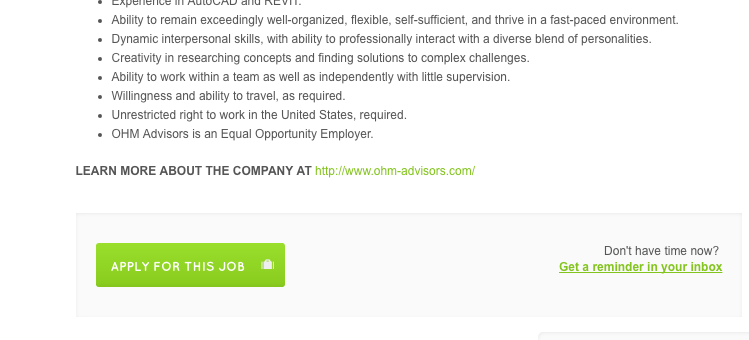
Applying for the Job
Once the applicant clicks through to the job application, they are greeted with a page asking the most basic questions for that particular job. These include questions concerning their highest degree earned, right to work in the U.S., and specific base skills required for the job.

The skill-related questions will require the applicant to answer on a scale of 1 to 5, with 5 meaning “Expert” and 1 meaning “No expertise in this area.” This helps quickly determine the applicant’s proficiencies in several key areas.
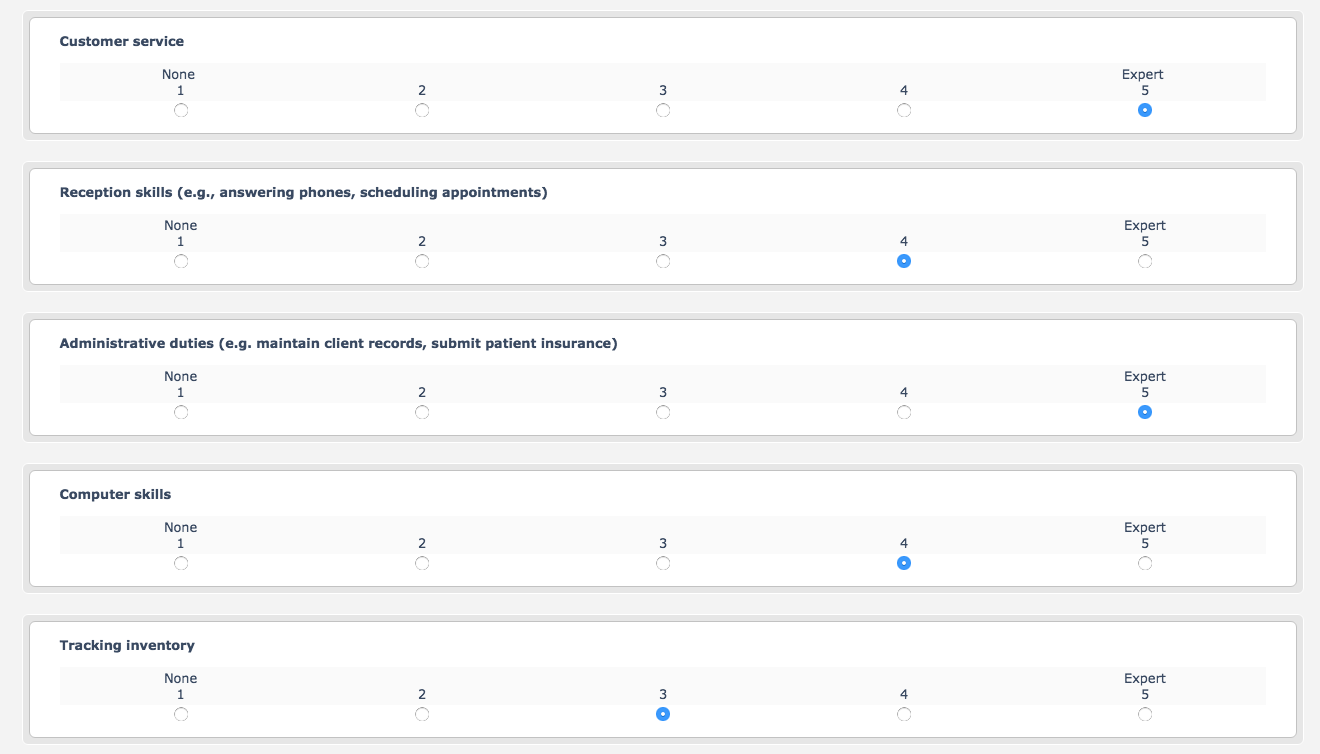
If the applicant passes this first portion of the of the job application, they move on to the Employment Application Form, which asks more detailed information about the applicant–including their education, work experience, and contact information.
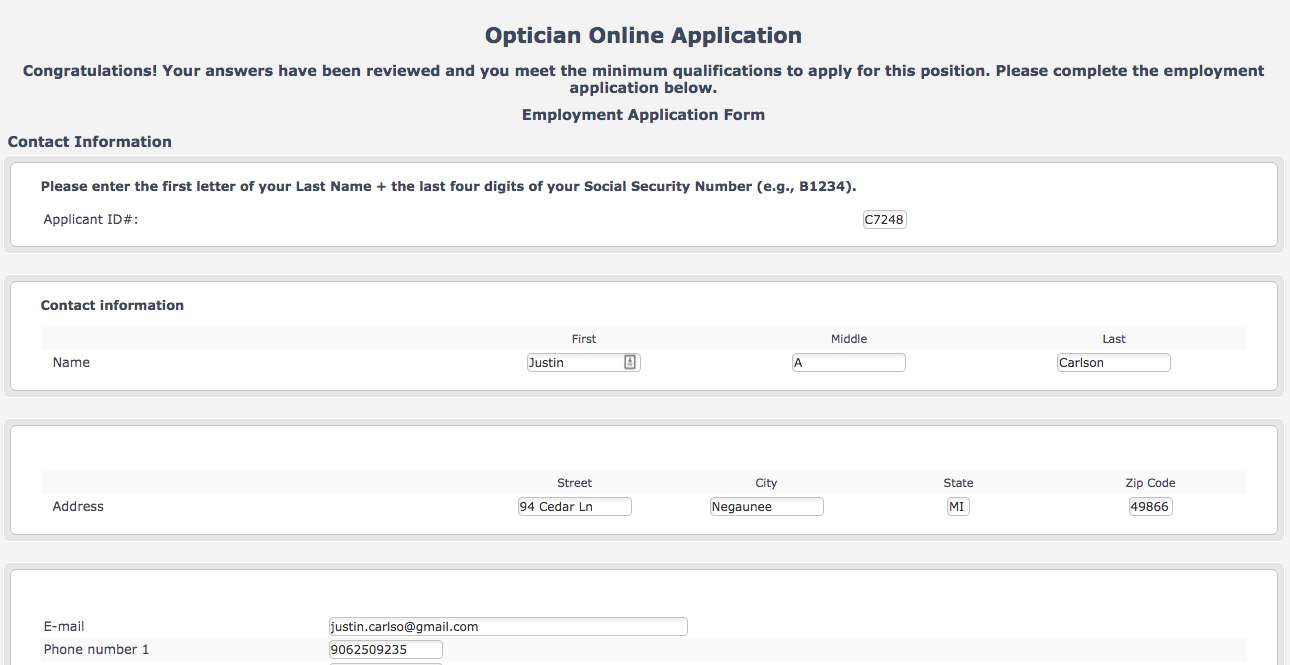
The applicant then continues on to the SDS Big Five Inventory, which measures the applicants’ behaviors in five specific areas: openness to experience, conscientiousness, extraversion, agreeableness, and neuroticism. Although this is a relatively short assessment (it takes about 20 minutes to complete), it yields powerful results to help paint a complete picture of the applicant’s behavioral traits as they relate to a specific job.
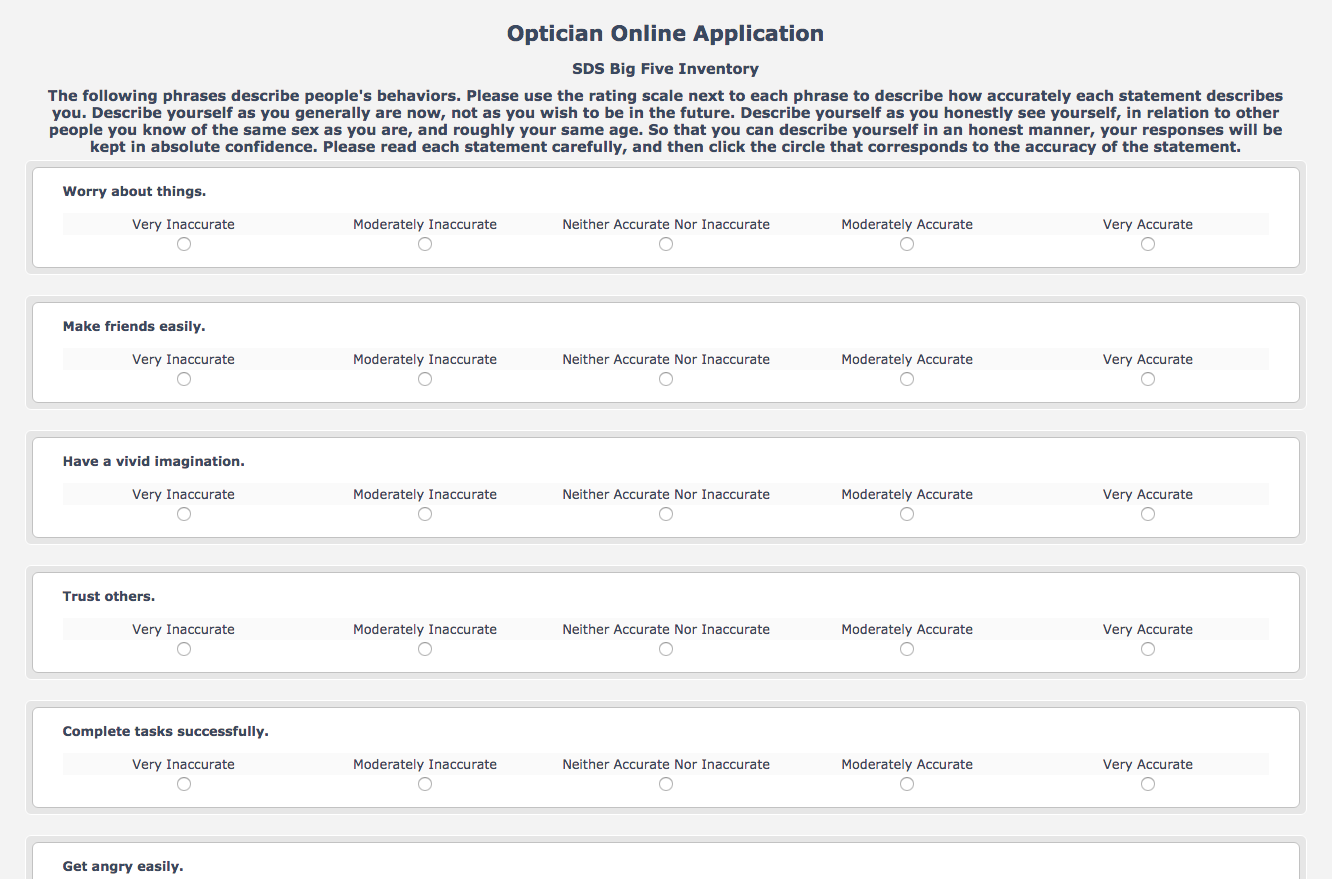
Following the Big Five Inventory, the applicant will be taken to the final part of the application–the Situational Judgement Test–where they are asked a series of questions that put them into dealing with real-life scenarios for that particular job, and asks how they would respond. These questions gauge the applicant’s common sense problem solving and cultural fit as well as their competency in their particular field.
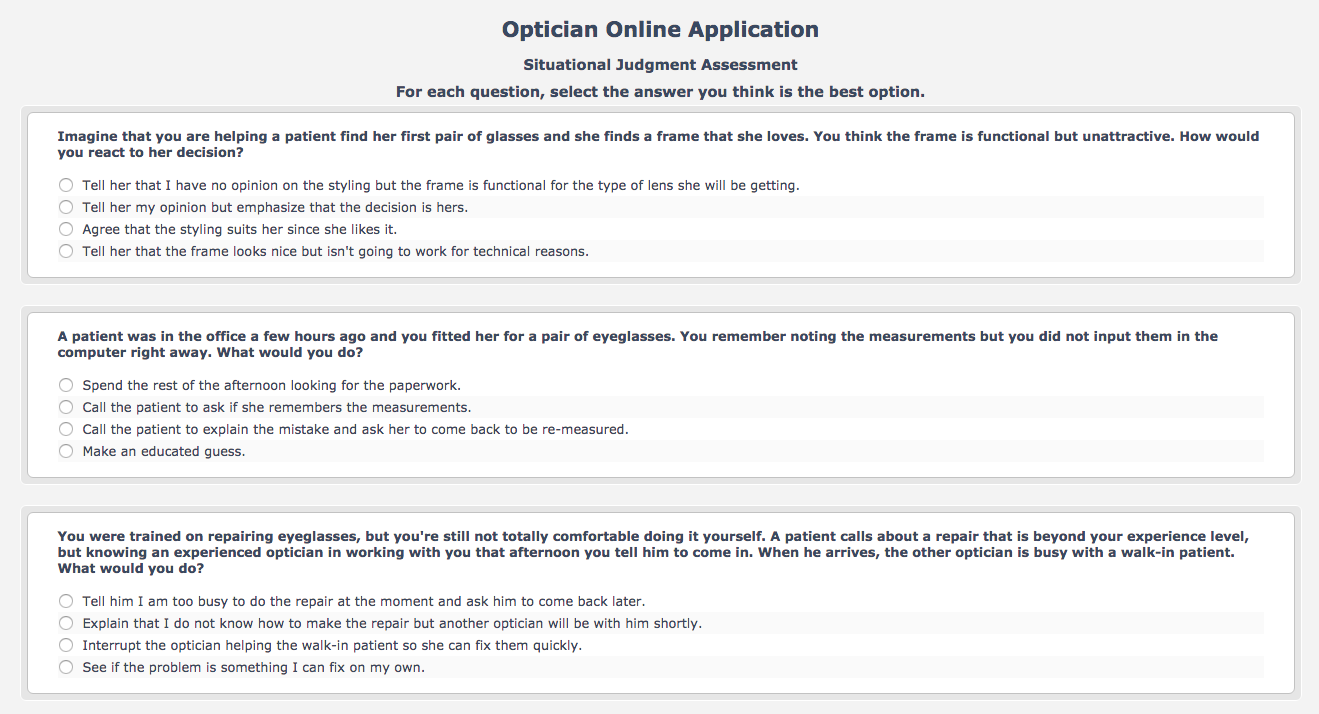
Following the completion of this application, the applicant’s HireScore will be generated and ranked with the other applicants for this position. This score is determined by a customized, job-specific algorithm that weighs the values from this application against the optimal values for that particular job. The employer can then contact the top-ranking applicants and continue the hiring process.
Final Thoughts
After taking a sample SDS job application for an optometrist position, your humble correspondent had the following thoughts to offer on the process:
- The application was straightforward and easy to understand. It was organized in a logical manner and did not ask any questions that felt out of place or too personal.
- The Big Five Inventory personality assessment contained short and simple questions, but it was clear that the number of questions combined with their specificity would accurately reveal significant negative (or positive) personality traits.
- The Situational Judgement Test for this application (in this case for an optometrist position) asked questions that seemed to have relatively obvious answers, but also questions that were more difficult and required specific knowledge–such as converting eyeglass prescription values from one format to another.
So there you have it. The SDS application process itself might not be entirely different from some of the other processes out there, but the customized and specific questions combined with the knowledge that the values from this assessment are weighed against the optimal values for this job and then combined to produce a single comprehensive score gave the feeling that this was a fair and accurate process that minimizes human bias. And this certainly would increase the confidence in the system for both applicants and employers alike.






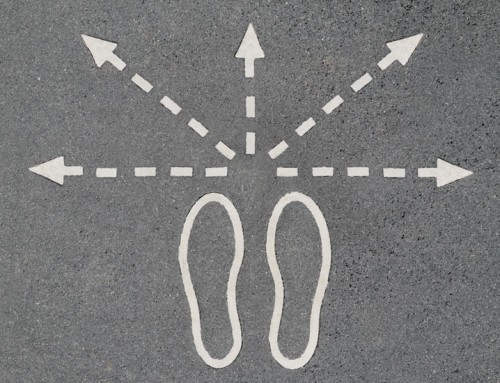

[…] This article appeared originally at https://stangds.com/blog/job-candidates-journey-sds-application-process/. […]